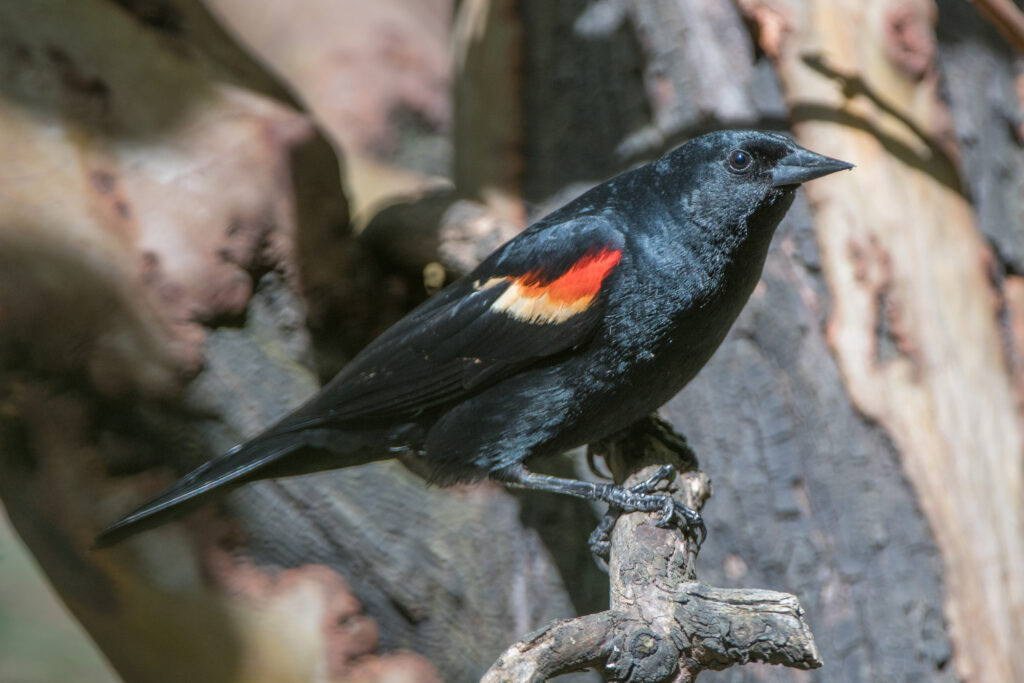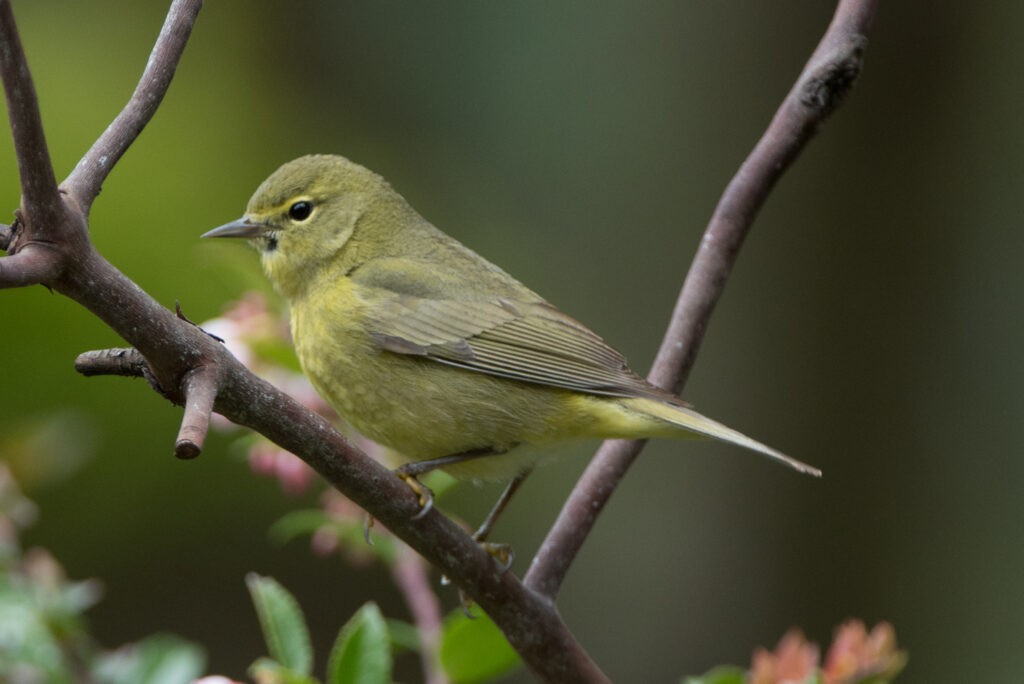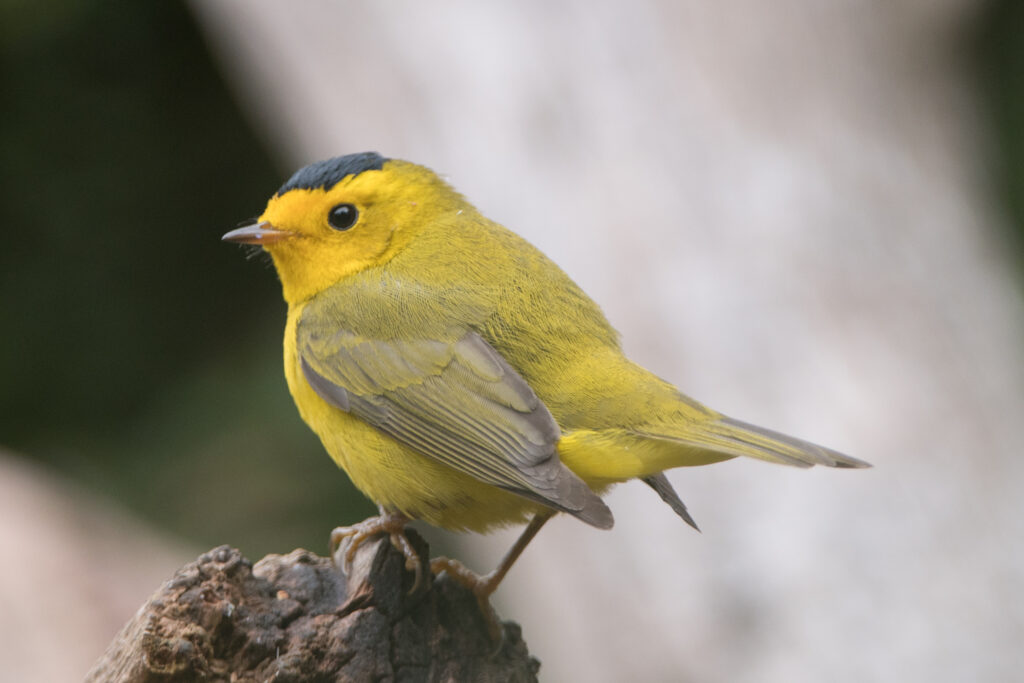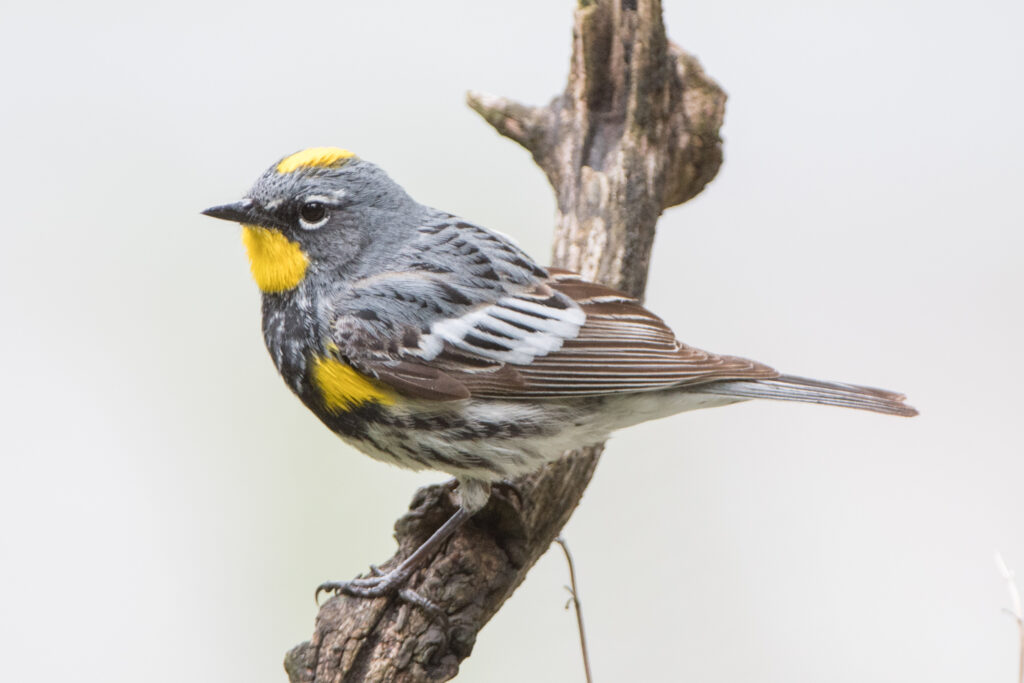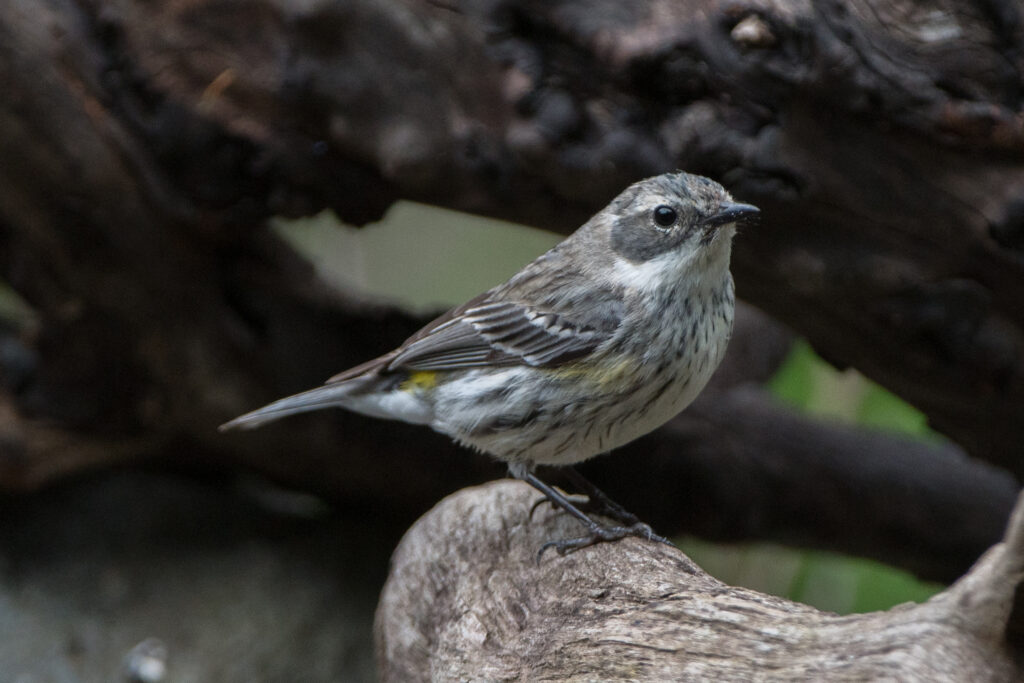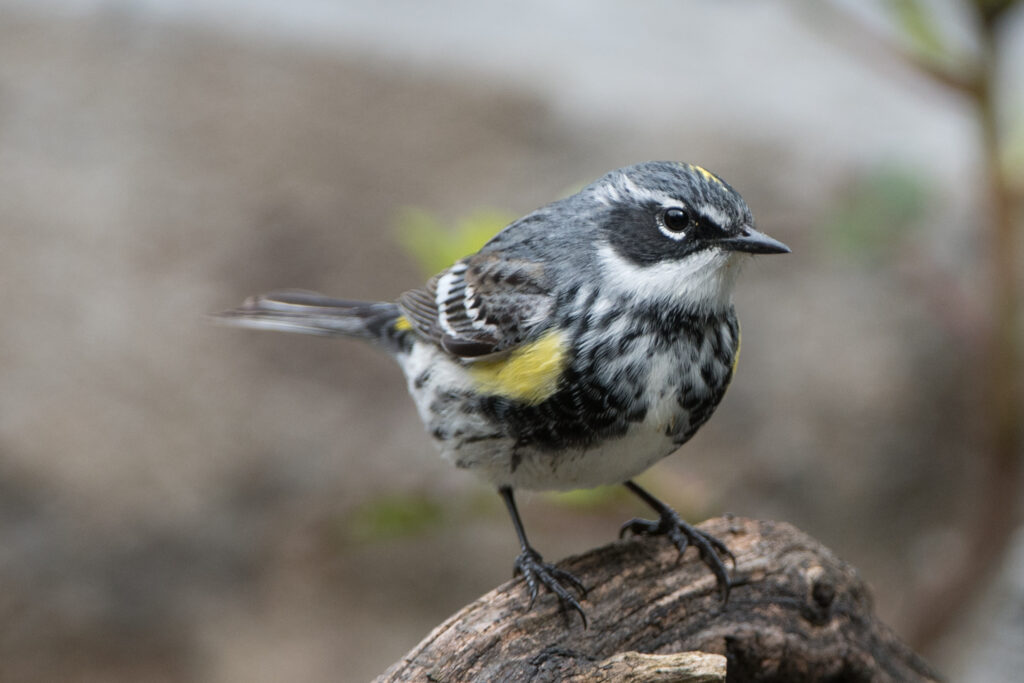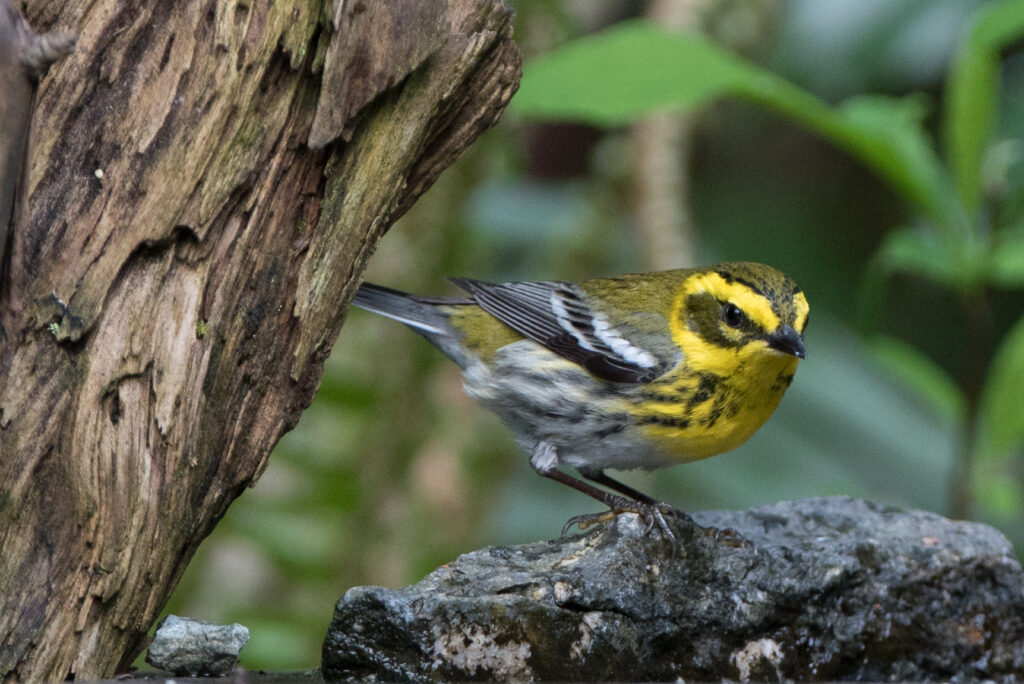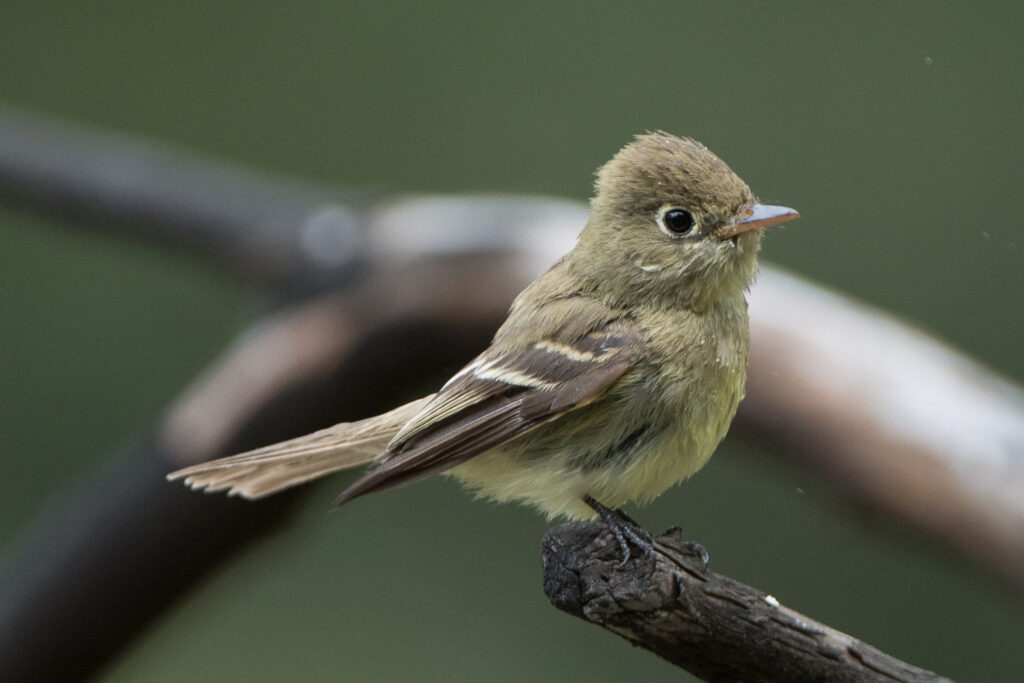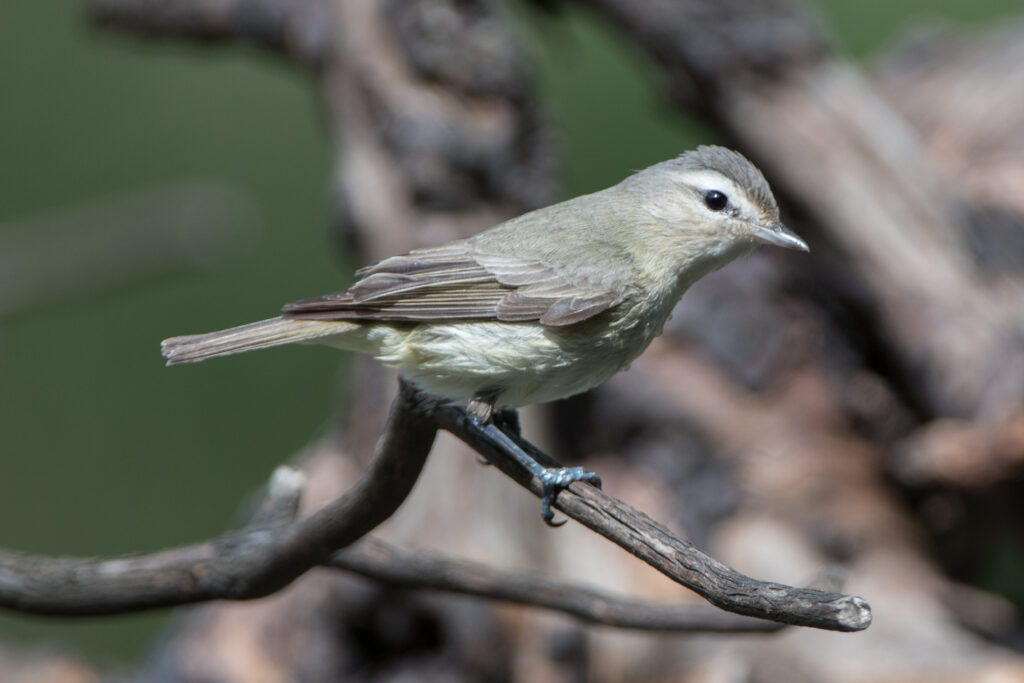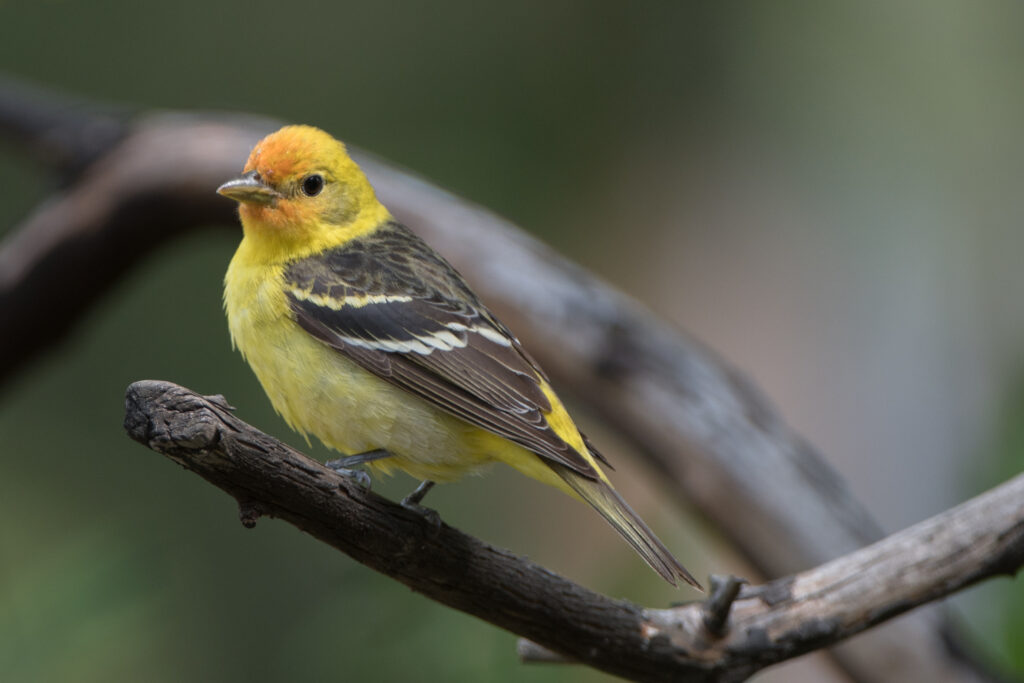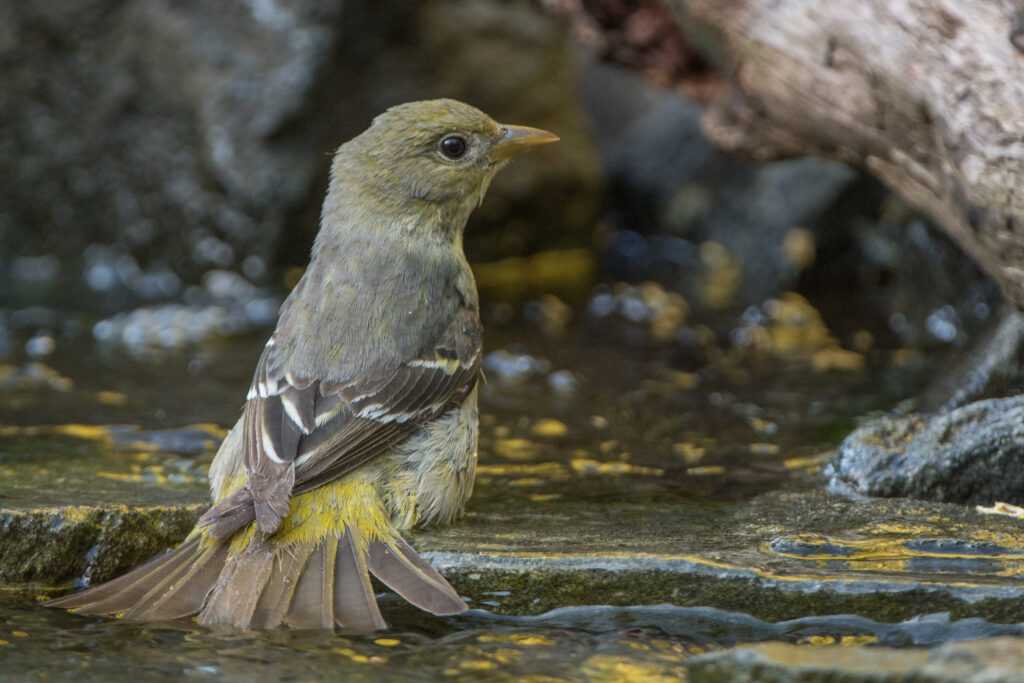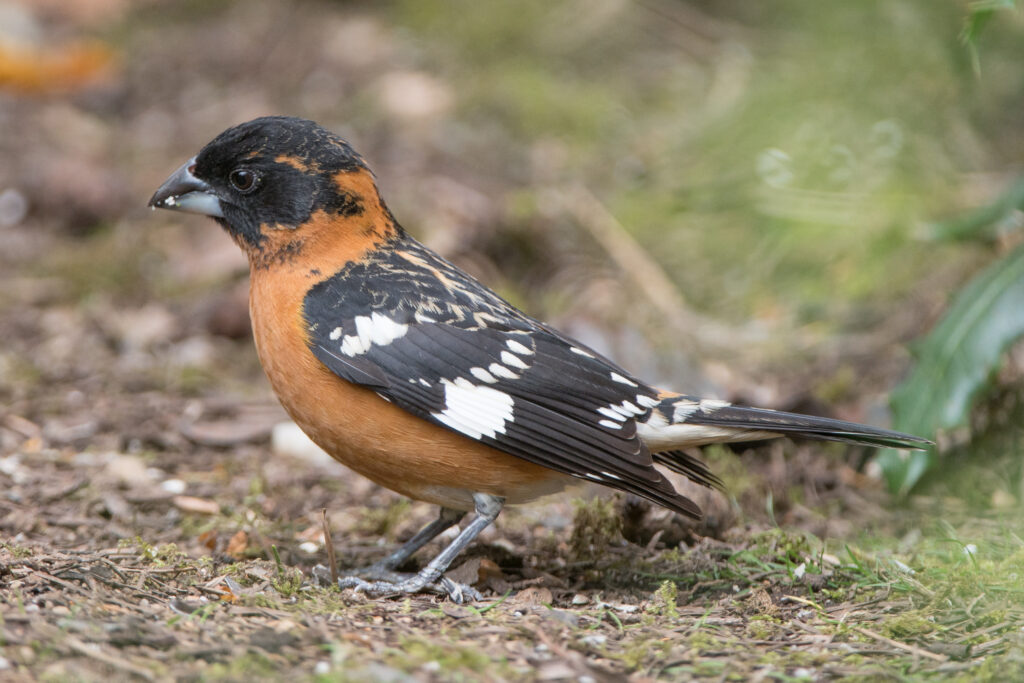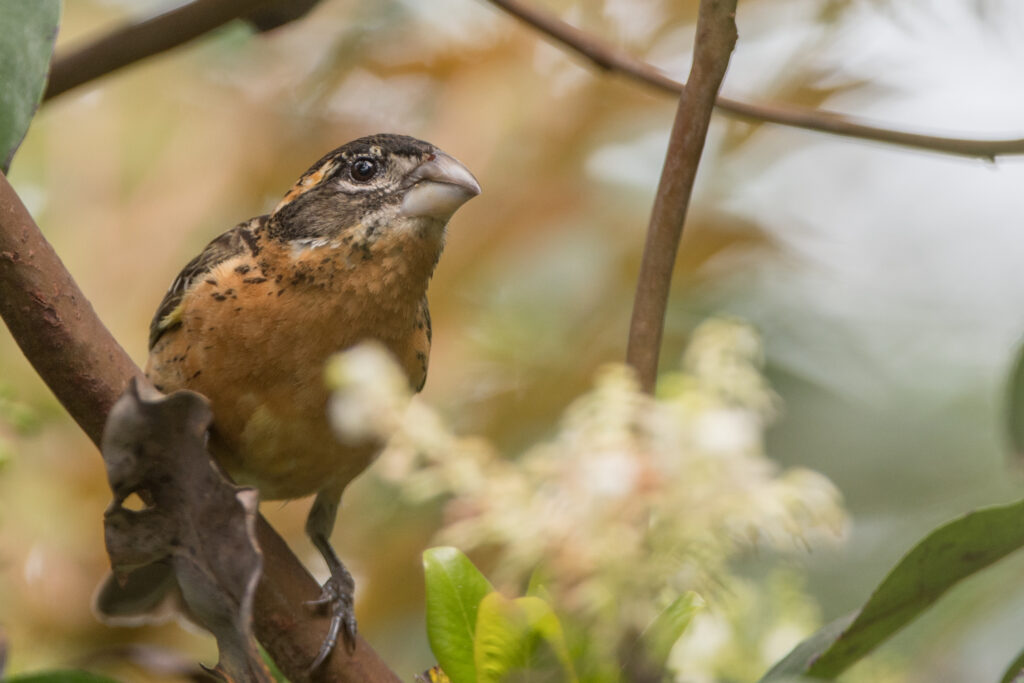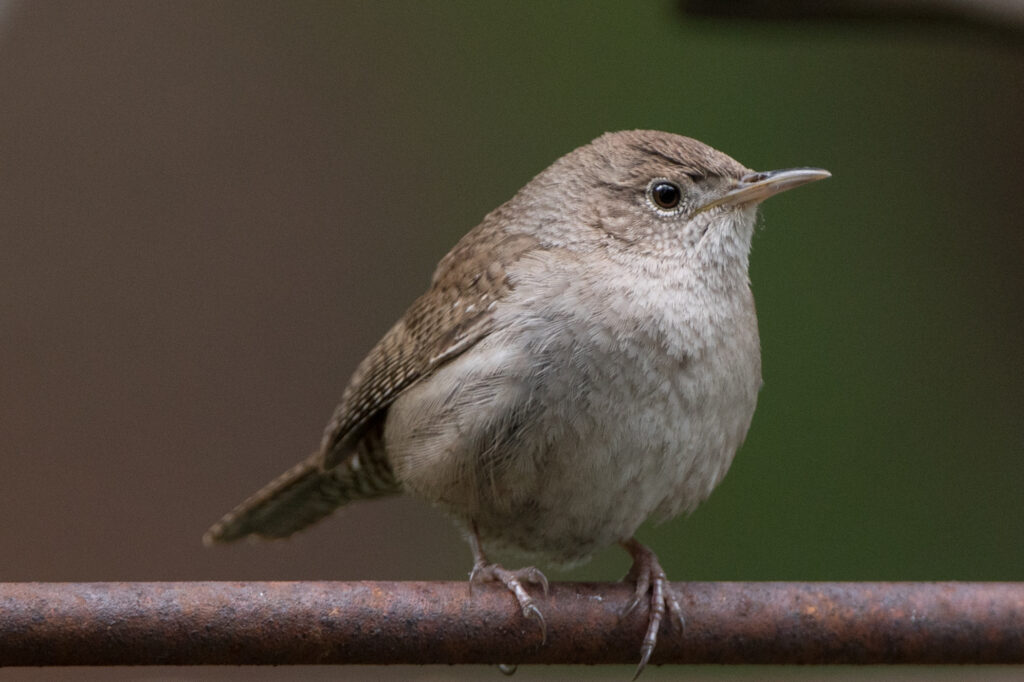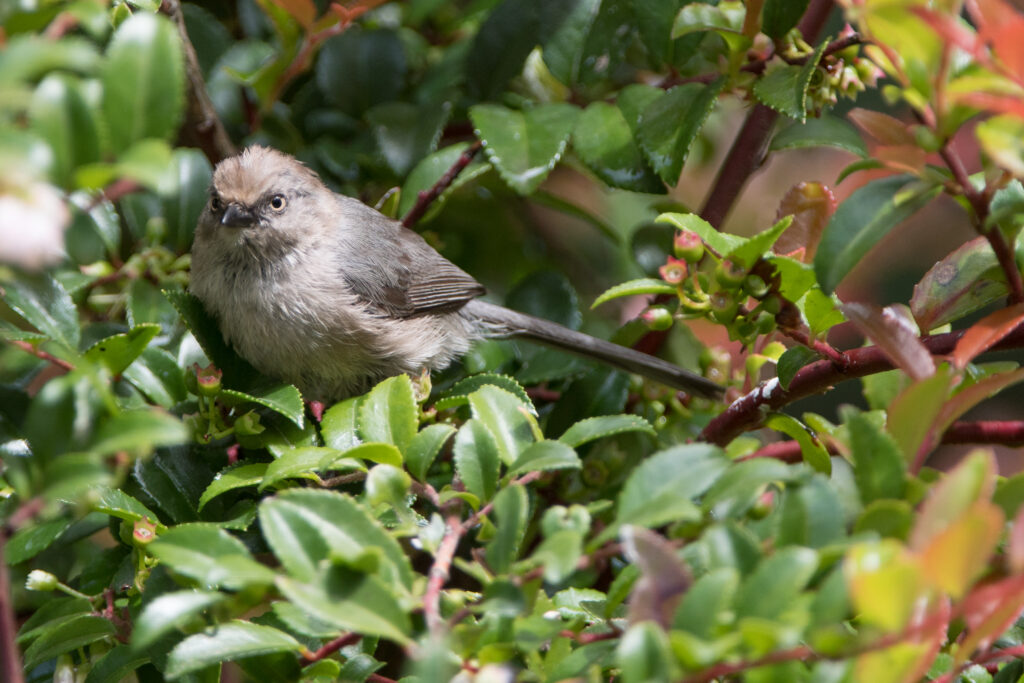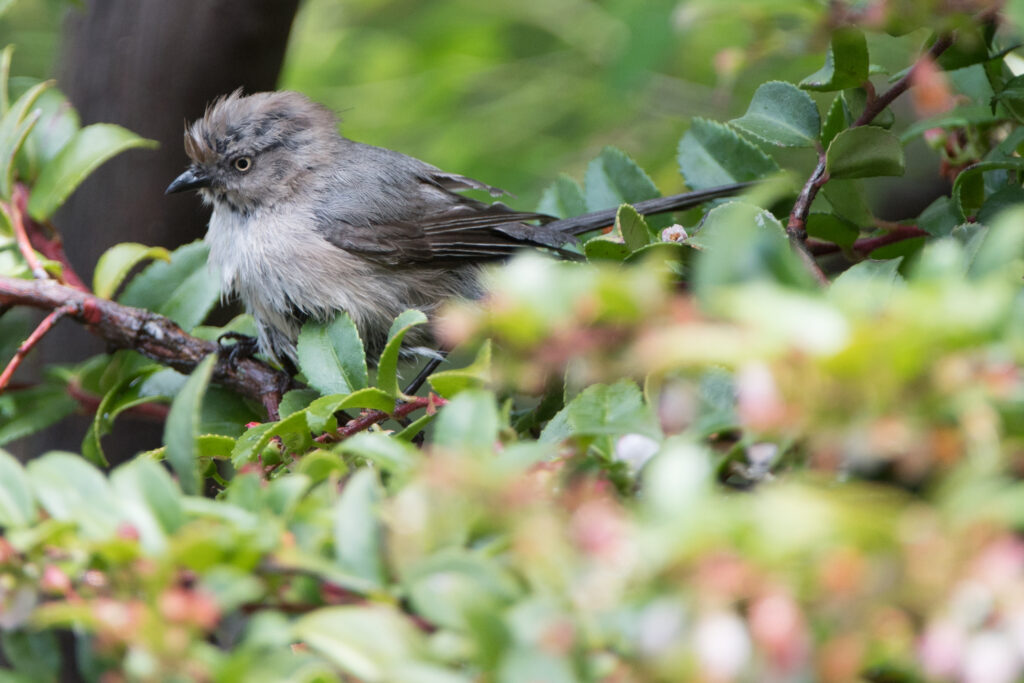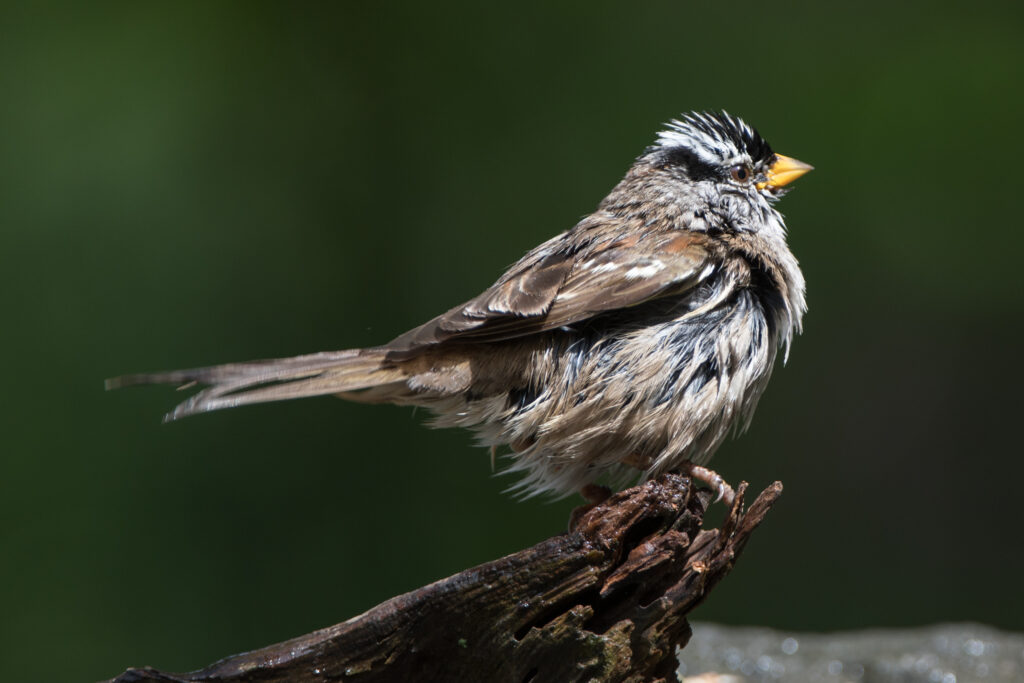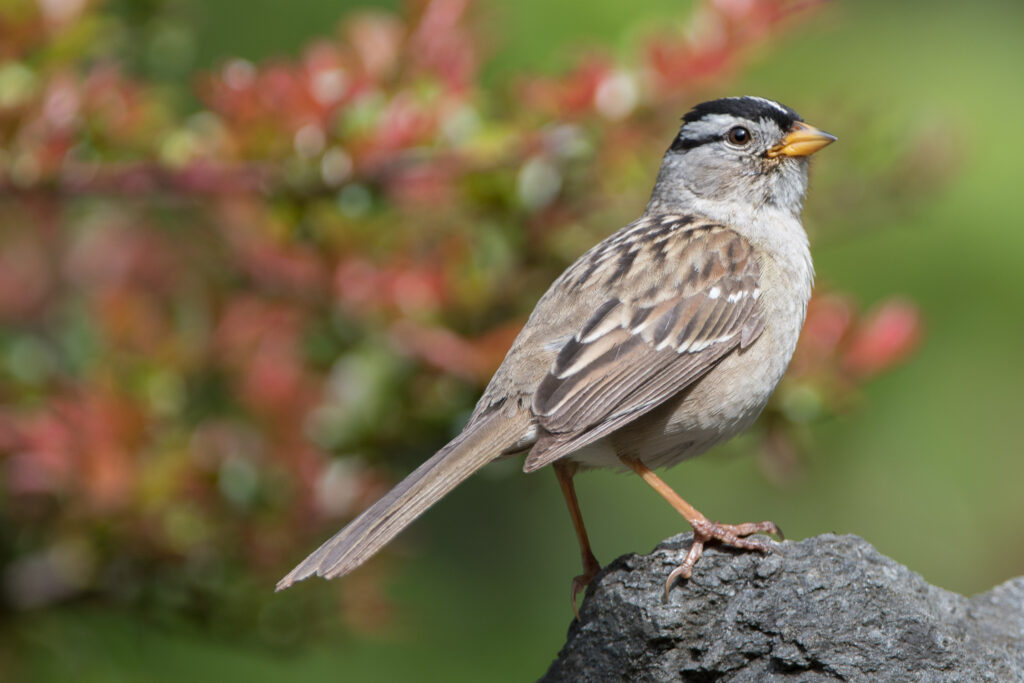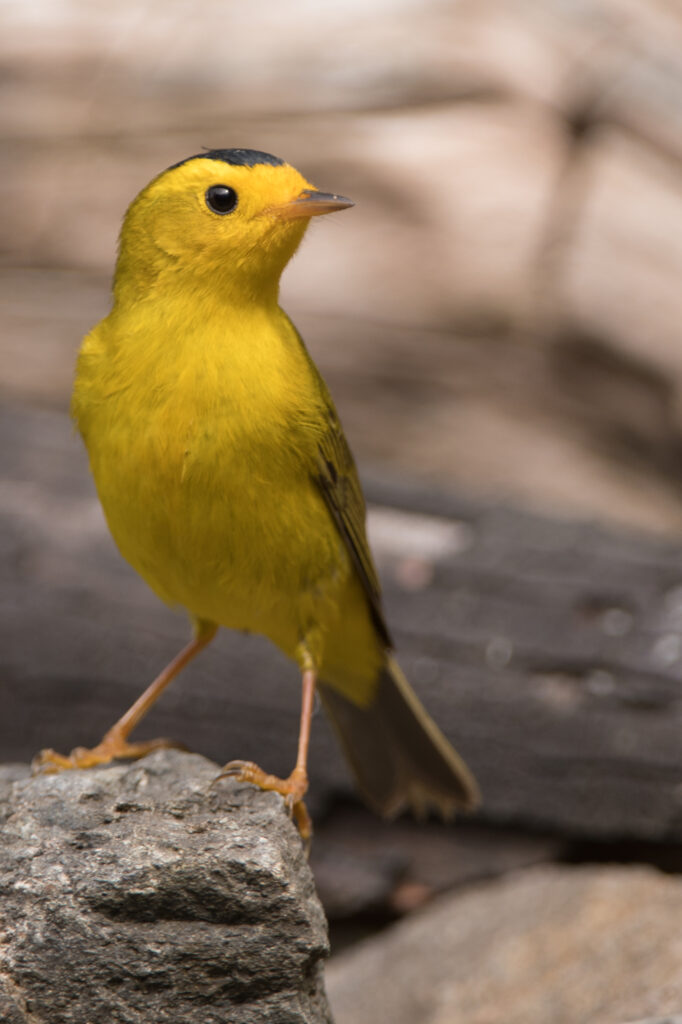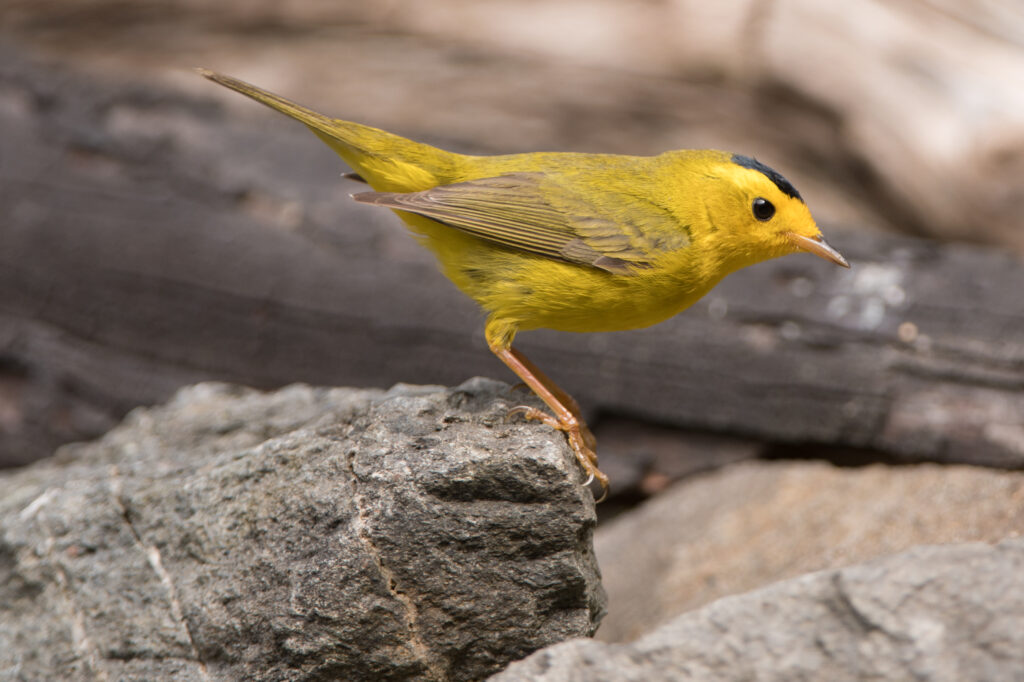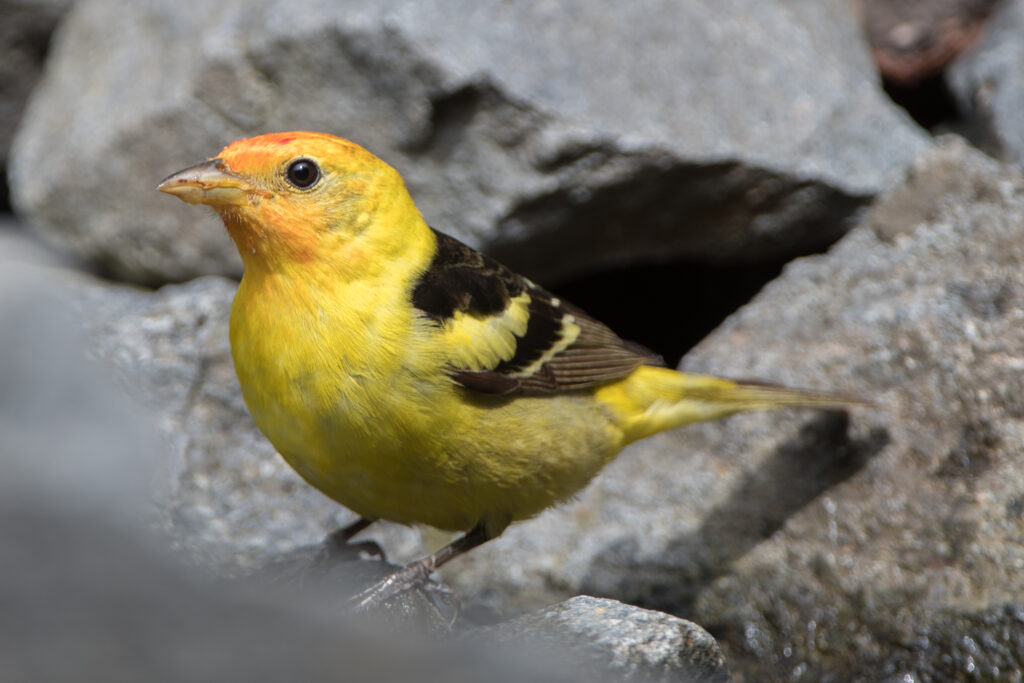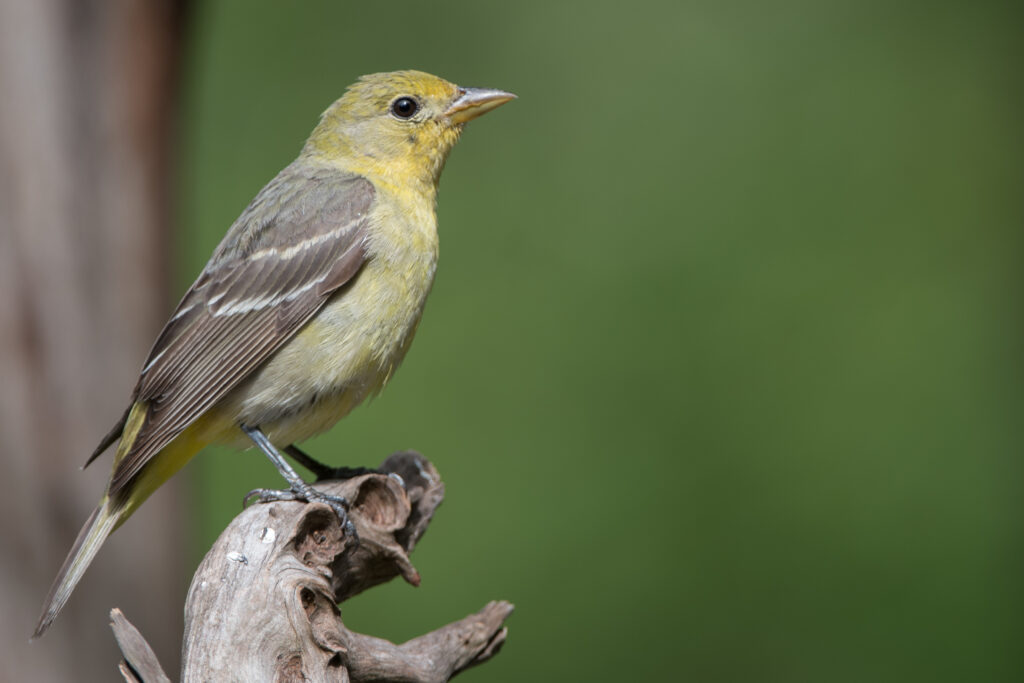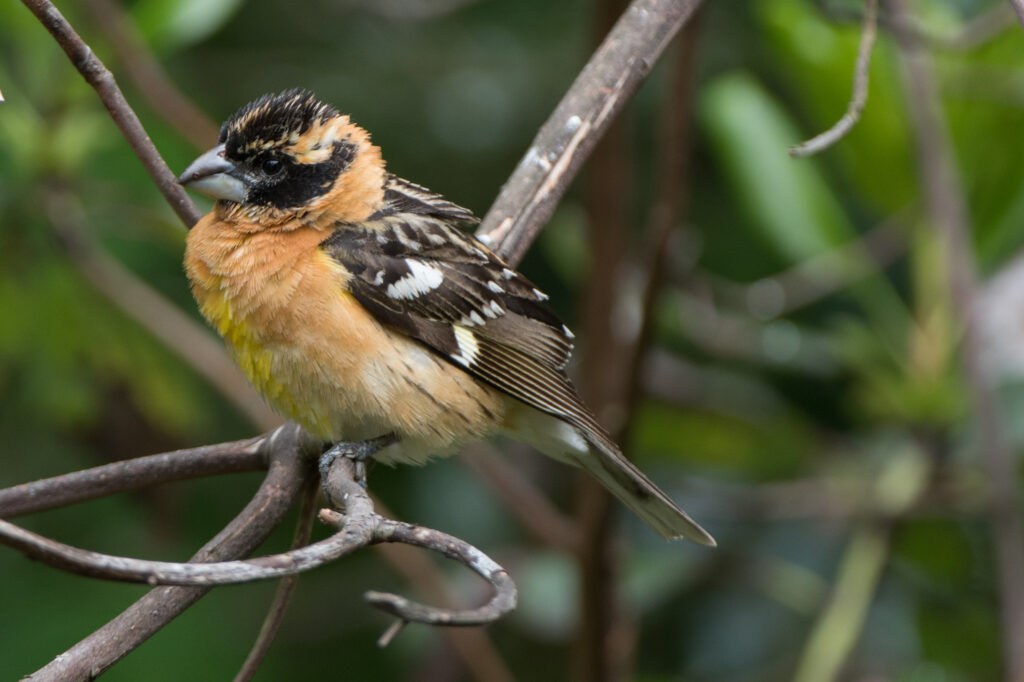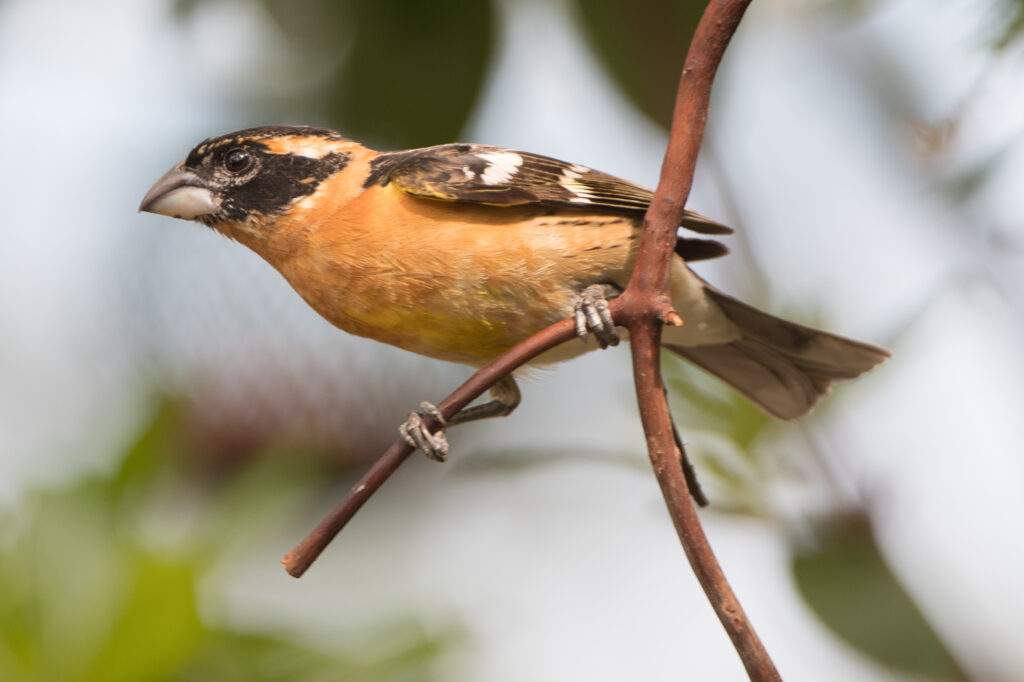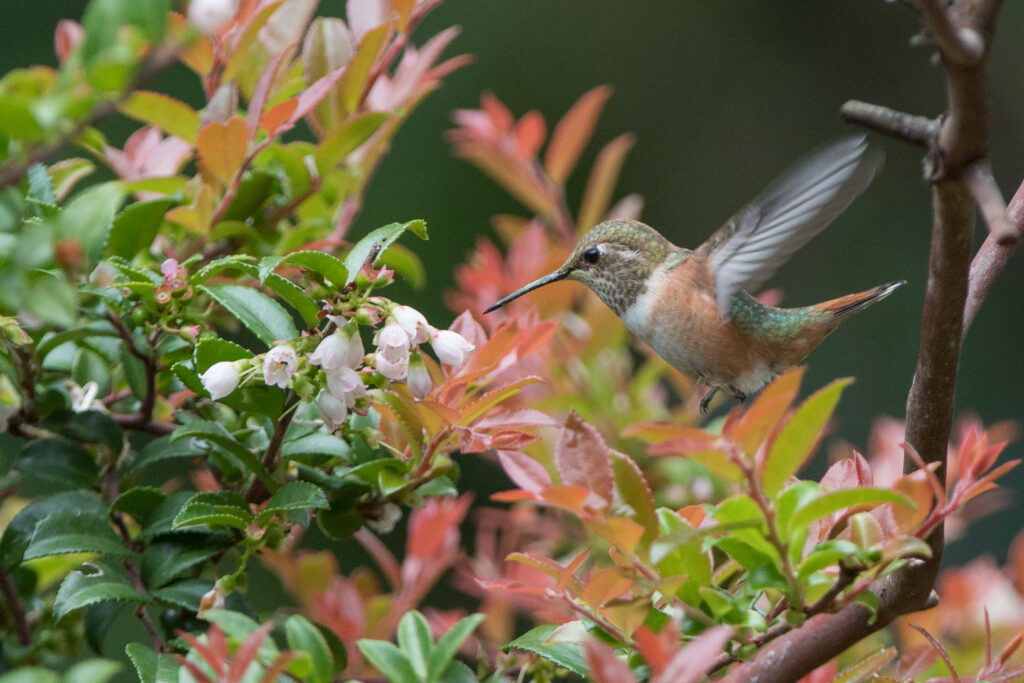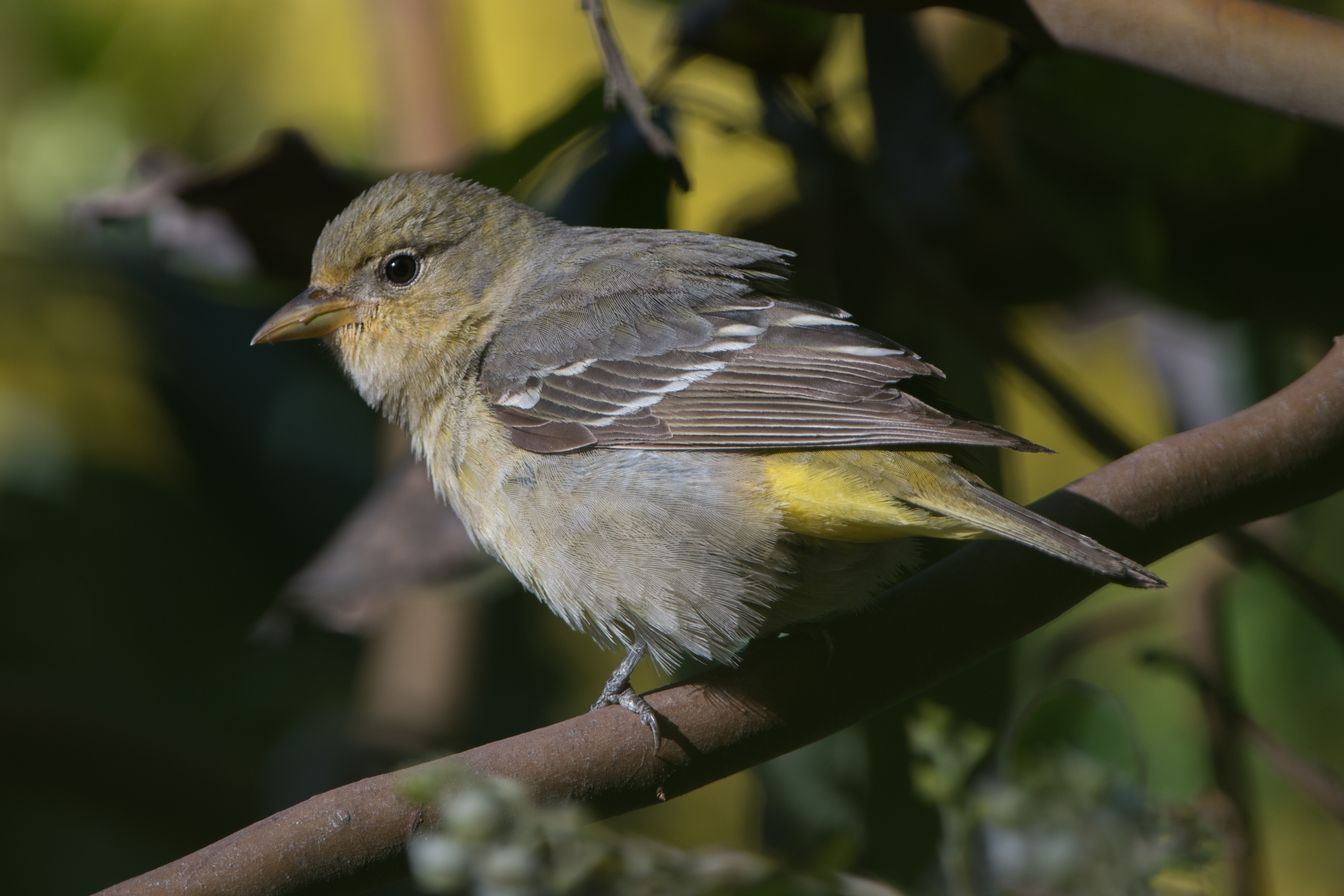As I believe I expressed in prior blogs, the arrival of spring migrants has passed us by. We’re seeing very few of the spring arrivals… most of them apparently arrived and passed through, so that many of my interesting and rarer photographic subjects are gone. But there are still plenty of birds in the yard and I’ve continued my photographic efforts.
Perhaps one of the more interesting developments is our sighting of California quail chicks we saw for the first time yesterday (June 2, 2020). Unfortunately I was unable to photograph the chicks. The parents are EXTREMELY protective of the young chicks and I can’t get anywhere near them at this stage of their development. The chicks are extremely small and only spend limited time barely out from the safety of our brush pile.
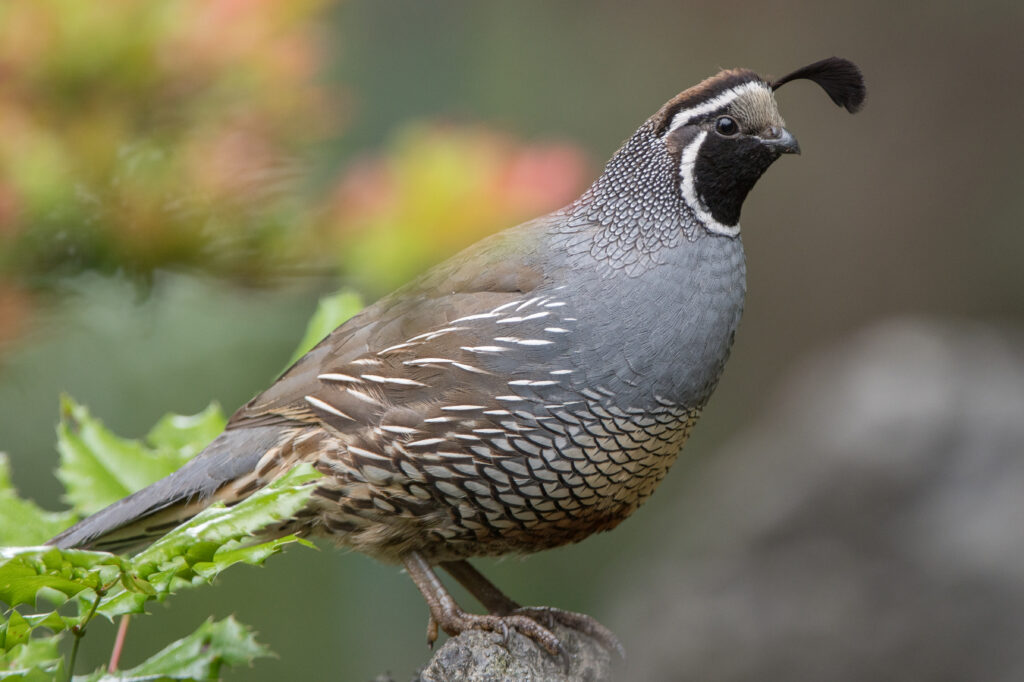
We still have all four of our hummingbird species/sexes. Here is a female Rufous hummingbird feeding on one of several salvias we have in the yard. I thought for several days that the males had already left, but discovered we still have at least one in the yard.
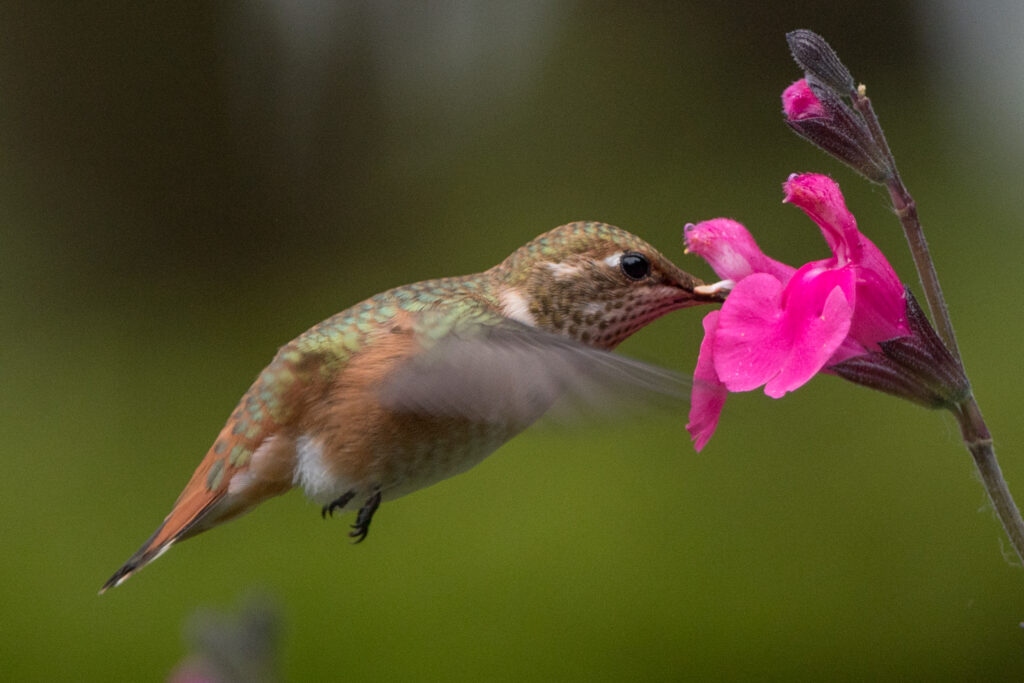
For a day or so we had a male Anna’s hummingbird trying not just to try to dominate the hummingbird feeder in the yard, but also the watercourse, salvia and all related environs.
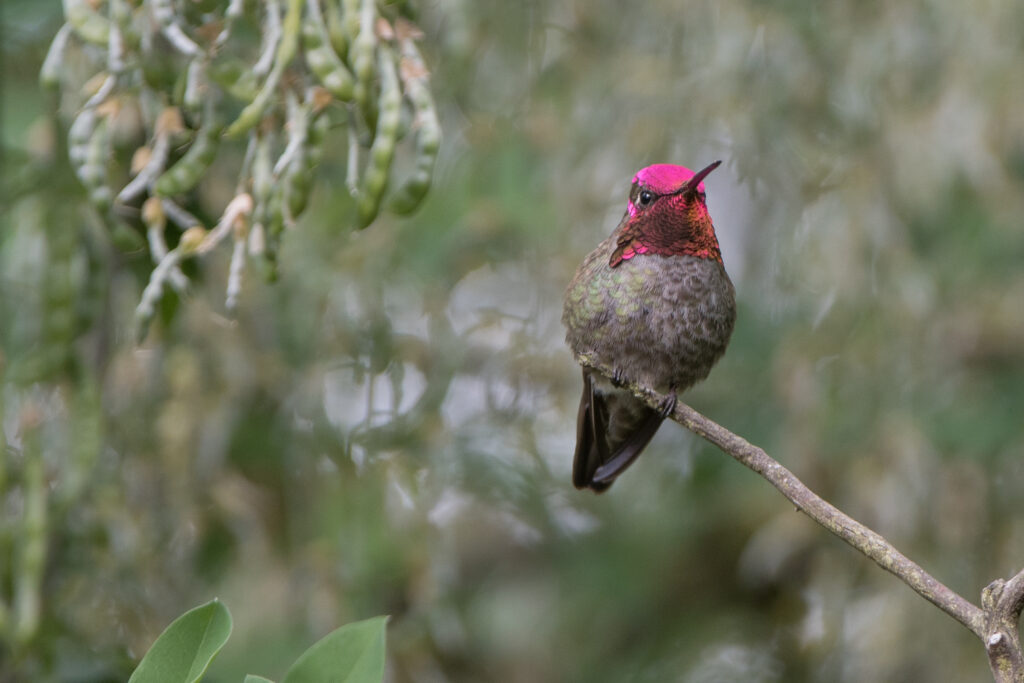
While photographing the hummingbirds in the yard a male Northern flicker flew in to access our suet feeder.
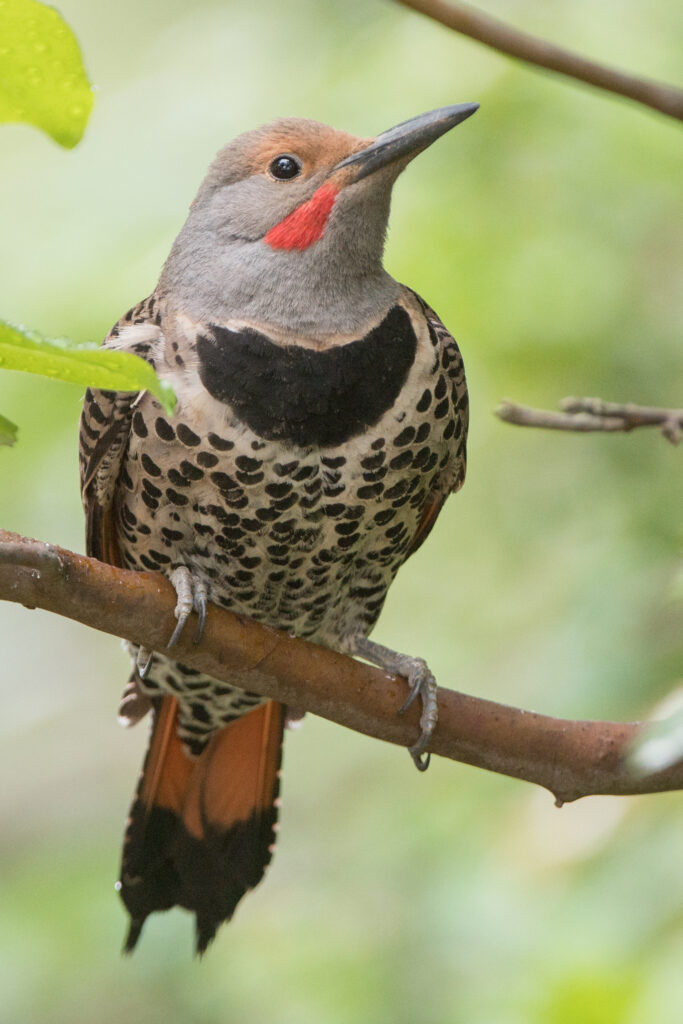
We have a pair of Black-capped chickadees feeding young in one of our bird houses. It’s interesting to peruse the smorgasbord served by the parents. If you enlarge this photo you can see that the chickadee has a beakful of insects and worms.
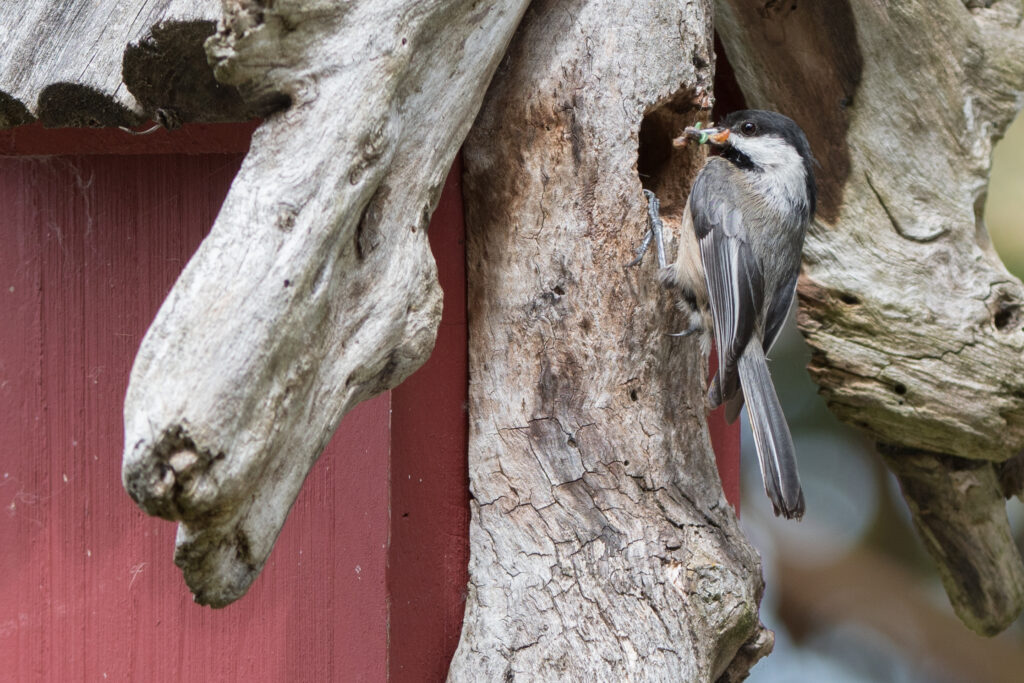
And generally continuing our new arrivals theme, we have at least one male Red-winged blackbird making several trips daily to access our various bird feeders (sunflower seed, peanut and suet) and transport the food back to a nest located somewhere near the sewer treatment pond located about two blocks away. This is the only time of year we have visits from the blackbirds. My theory is that the birds can get food much more readily from our feeders than spending the time away from the nest hunting, so they make quick trips up the hill to our yard.
